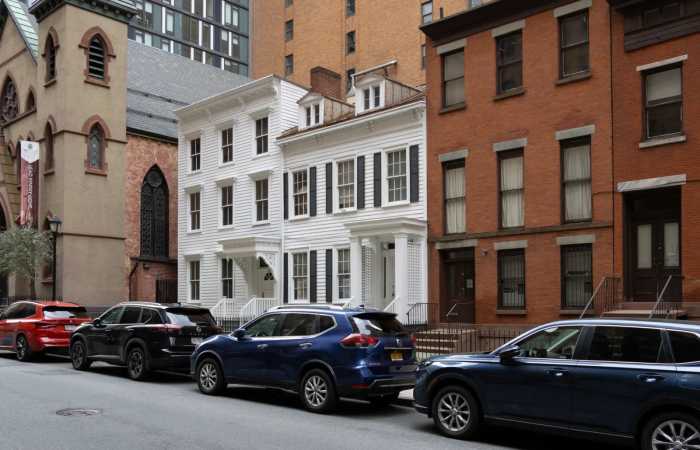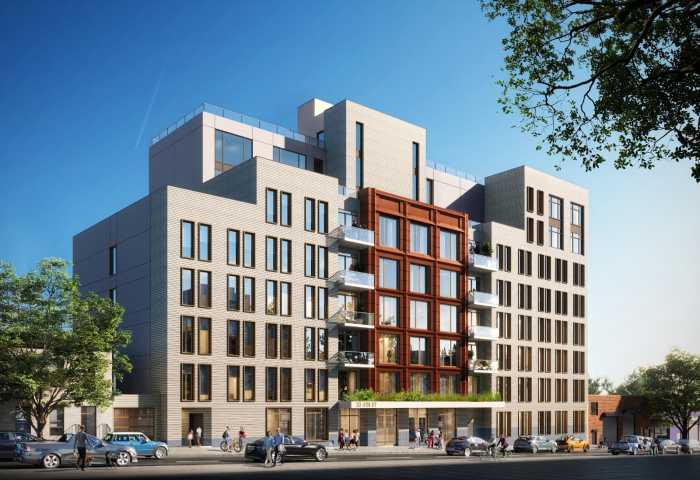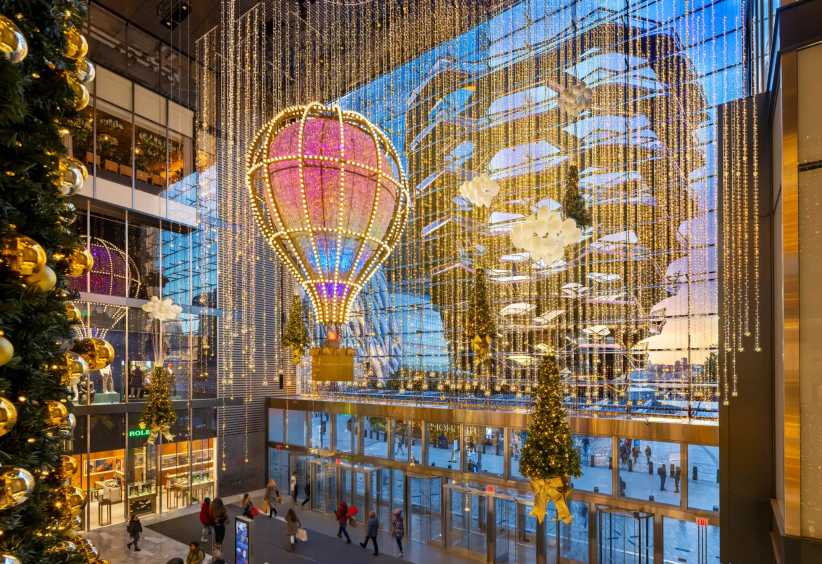The Atlantic Yards project is a threat to one of America’s national treasures — Brooklyn’s brownstone blocks — two preservation groups charged this week, citing new state renderings that show 15-story illuminated advertising billboards on either side of the development’s main building.
The National Trust for Historic Preservation and the group Scenic America both said that the 16-tower arena, residential and office space project would overwhelm the brownstone blocks in neighboring Prospect Heights, Fort Greene and Boerum Hill.
And Scenic America raised a new issue: Two 150-foot-tall illuminated billboards on either side of the “Urban Room” atrium at the intersection of Flatbush and Atlantic avenues would constantly bathe “Brooklyn’s famed brownstones … in the light from 15-story beer ads,” said Kevin Fry, the group’s president.
The billboards only came to light last week, as part of the state’s hurriedly prepared final environmental impact statement for the $4.2-billion project (see rendering left).
Such billboards are illegal under New York City zoning — but that law is one of many local codes being superceded by the state in its approval of Atlantic Yards.
“Times Square should not be exported to Brooklyn,” Fry said at a press conference this week on low-rise Fort Greene Place, just two blocks from where the 620-foot “Miss Brooklyn” tower would rise.
Atlantic Yards developer Bruce Ratner has said that light from the signs would only be turned up to maximum settings on game nights — but Fry retorted that the Atlantic Yards approval process gave him little reason to believe Ratner could be reigned in.
“They have exempted themselves from the law [so] there will be no real way to ensure that they will not max out the [lights],” he said.
Roberta Lane of the National Trust echoed Fry’s sentiment.
“Brooklyn’s brownstones are a national treasure and preserving them should be a national concern,” she said.
Neither Ratner nor the Empire State Development Corporation would return calls for comment on the preservation groups’ charges.
But the state’s final environmental impact statement claims that the “signage scheme” will focus “lighting and signage at the intersection of Flatbush and Atlantic Avenues and away from residential neighborhoods.”
The lighting “is not a significant adverse impact,” the report concluded.
Fry was unconvinced.
“A ‘Blade Runner’ dystopia is emerging … where every blank wall is covered with light-emitting diodes and the public has no choice,” he said. “The project demonstrates a total disregard for the wishes of the people of Brooklyn and for the fundamental character of the community.”

























